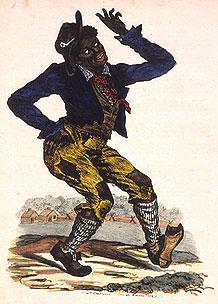 Racism has and will always be a hot-button topic, more so for anybody who has survived the infamous Jim Crow era of the United States.
Racism has and will always be a hot-button topic, more so for anybody who has survived the infamous Jim Crow era of the United States.
From 1877 to the 1960s, African-Americans were treated as literal second-class citizens. They couldn’t vote, they couldn’t use any facilities reserved for Whites, and couldn’t shake hands with Whites. Given the heavy restrictions imposed on their civil rights, it’s no surprise that a gesture as small as refusing to sit in the back of a bus sparked a firestorm of civil activism.
Brief history lessons aside, how would you feel about going to a museum whose express purpose is of displaying artifacts from this era?
A former sociology professor has used his 2,000-piece collection of racist memorabilia to start a museum dedicated to the worst excesses of the segregation era. The exhibits range from a full-size replica of a lynching tree to a T-shirt that reads “Obama in ’08,” accompanied by a cartoon monkey holding a banana. On one wall, a poster shows four young black children sitting by a river, with the caption “Alligator bait.”
The objects “should either be in a garbage can or a museum,” according to David Pilgrim, founder and curator of the Jim Crow Museum of Racist Memorabilia. The former professor at Michigan’s Ferris State University started the collection as a teenager in Alabama during the 1970s and donated it to the school in 1996. Now, thanks to donors, it has a permanent home in an exhibition hall on campus. The venue will have its grand-opening ceremony on April 26, the Associated Press reported.
To say the museum is awkward is an understatement. Taking this story into a more local context however, would you agree to setting up a local museum for racism, or prejudice, for that matter?
Personally, I’d love it.
Don’t get me wrong – I abhor bigotry of any color (no pun intended), and would love nothing more than to see the human race as a whole to outgrow it. However, I also strongly believe that for us to get past our prejudices, we will need to take a more critical look at out own history, and not just necessarily gloss over the triumphs that puts the fire in our nationalistic fervor. Less of a regurgitation of fairy tales, and more an unbiased eye to reality, if you will.
After all, NOT talking about the problem of LGBT discrimination hasn’t really helped spread awareness (DADT comes to mind), has it? And NOT talking about women’s issues certainly hasn’t done anything to help uplift their lack of access to medicines and other relevant services. If anything, pretending to be mum about these issues has only aggravated the problem. Not to mention that it leaves us incredibly onion-skinned when somebody does raise a stink.
Opening up discussions on our prejudices doesn’t necessarily mean we have to defend or justify them, after all. It can be as simple as us acknowledging that we’ve been ignorant over the matter of LGBT hate crimes, for instance, or that we’ve been insensitive pricks over women’s issues. It’s definitely going to be a very awkward first step to talk about our prejudices (let alone immortalizing them in a museum) openly, but then again, so was puberty, right?
Pinoys really need to realize that facing our own inner prejudices is a show of control: It means that we’re developing a mastery of our inner conflicts, and using our cognitive abilities to weaken decades of misconceptions and false assumptions. In martial arts-speak, understanding your own weaknesses and striving to correct them is a show of strength in itself.
Since I promised the presiding overlords to keep this short, I’m encouraging the readers to visit our FB page, or to post their two cents on the comments below.
As a parting note, here’s a question for you: If you could set up a museum for one particular type of bigotry in the Philippines, what would you choose, and what sort of memorabilia would you have on display?

